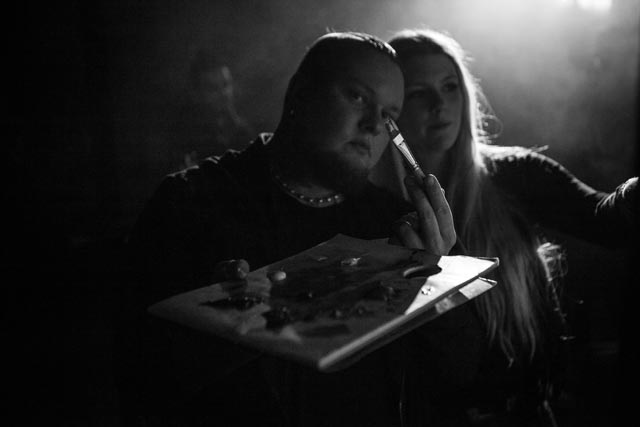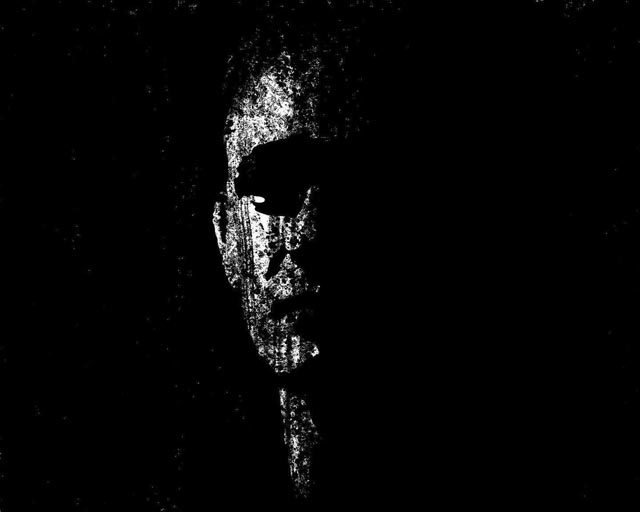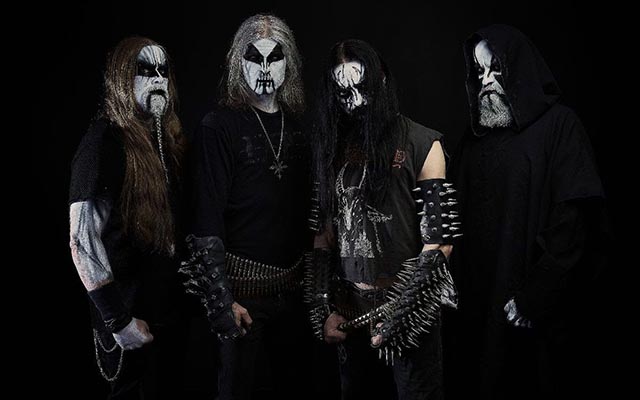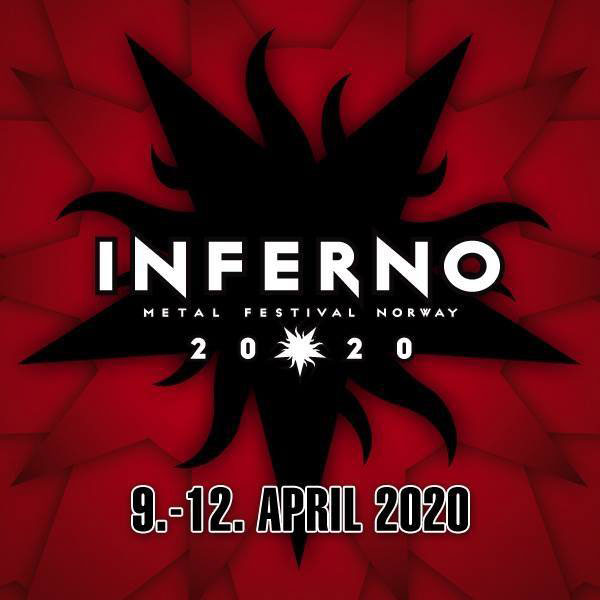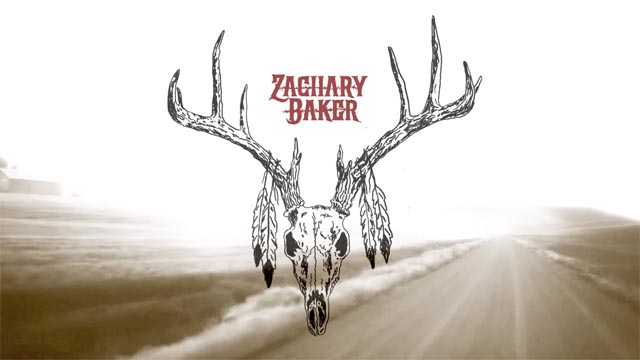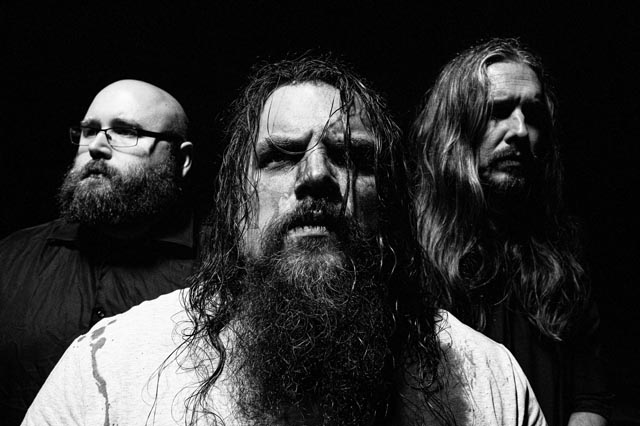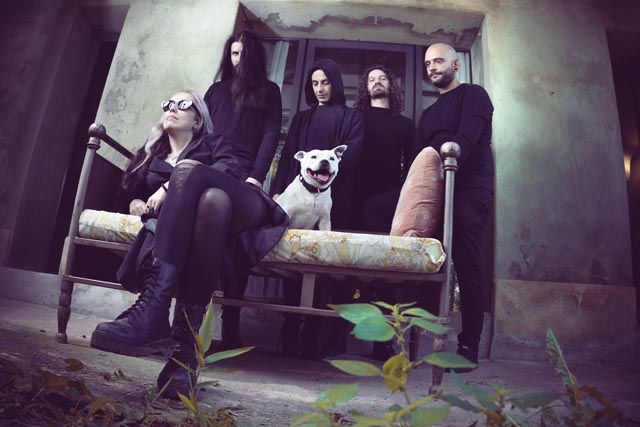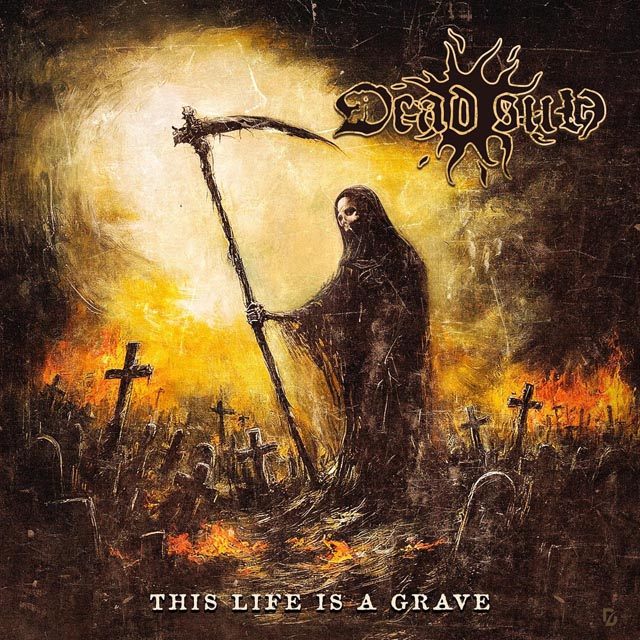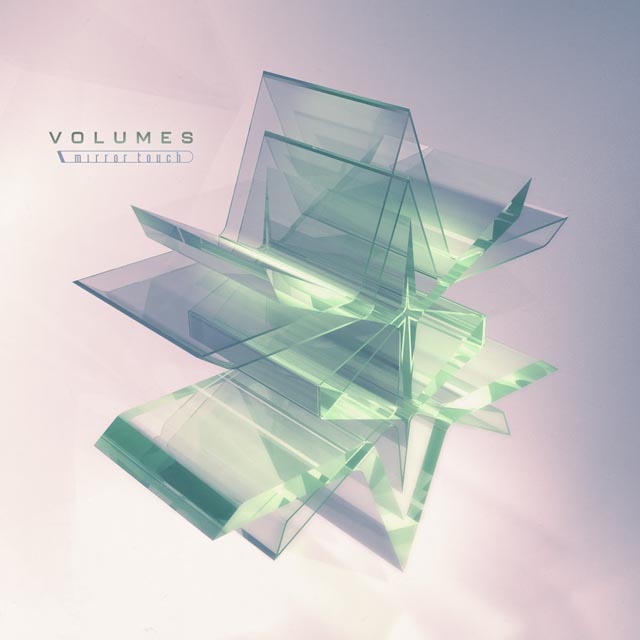“Nick is an amazing artist and an outstanding curator. Inferno’s art show is always prestigious, and to be included on the list of such amazing, legendary artists is a big honor.” ~ Stan Dark Art
The visual artist Nick Morte has distinguished himself as a beloved figure within the metal community. Born and trained in Russia, Morte eventually relocated to Norway, where he quickly garnered much support from other artists, musicians, and connoisseurs. His fanbase has long since become international. The beautiful and the dark mingle harmoniously in his mesmerizing paintings, drawings, and tattoos.
Morte has earned various forms of recognition, including features in magazines and an invitation to appear on the show Portrettmesterskapet by NRK, Norway’s leading television and radio company. Morte now acts as the curator of the annual Inferno Art Exhibition. Of course, Inferno Festival is a revered mecca for extreme music fans. Inferno was actually recently celebrated at the Norwegian Ambassador’s Residence at Palace Green in London. Needless to say, Morte’s role should be viewed as a major yet well-deserved honor. In addition, Morte has taken part in numerous other exciting exhibitions and events.
Notably, Morte has nobly defended the rights of independent artists in Norway’s courts. After being deported from the country, Morte convinced the government that tattooists are in fact professionals with special skills. His success in court permitted him to return to the country to create new artistic triumphs and further demonstrate his importance. Morte tattoos from both a private studio in Kolbotn and Bergen’s famous Nidhogg Tatoveringsstudio, which is co-owned by the esteemed duo Annlaug Maria Tolo and Jannicke Wiese-Hansen. Ms. Wiese-Hansen has designed logos and covers for many of the most important black metal bands, thus securing a place in history.
We were thrilled to have the opportunity to speak with Morte, a true Renaissance man. Please enjoy the result of our discussion with the master.
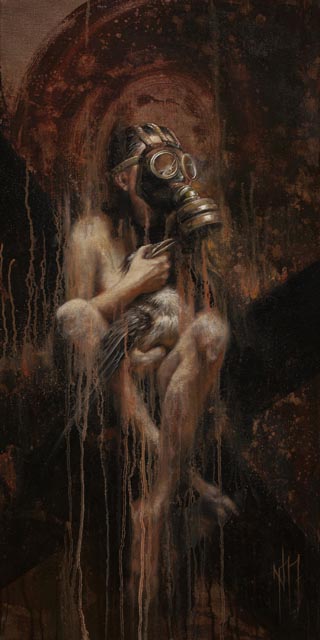
You’ve been part of Inferno as a tattooist since 2011. In 2015, you took things to another level by displaying art there for the first time. Finally, in 2024, Inferno made the exhibition official, and you naturally curated it. You will, of course, bring another exhibition to Inferno this year.
I’ve watched it grow from a tiny exhibition with a few “tattoo and art” stands into this museum-size international event that we see now. It’s almost surreal because I’m from Russia originally. I’m from that part of the country where people don’t even think they will see Moscow. Today, I was talking to Seth Siro Anton from Septicflesh. We just had a really nice chat, just talking and laughing, making plans for his appearance at Inferno Art Exhibition. I had to stop for a second and reflect on the fact that I was listening to Septicflesh back in ’90s, and he has inspired me with his music a lot. I have been painting throughout long sleepless nights, having his music as a soundtrack for my art creation process. And now, we talk because I’m inviting him to the exhibition that I’m curating. I am very grateful for this opportunity. It’s a lot of work, and everything runs on enthusiasm. I get to show my art, meet people that inspire me, and hopefully inspire someone too. The participating artists are all really sweet people. And for them, it’s great being part of something big and sacred at the same time. Because we all feel like we belong there, “in the darkness.” The exhibition includes a lot of different artistic expressions. I think will be interesting to people both from the art and metal world. I hope our audience will be open to accept some of those mediums. Some art might be hard to understand, but that’s how you actually grow.
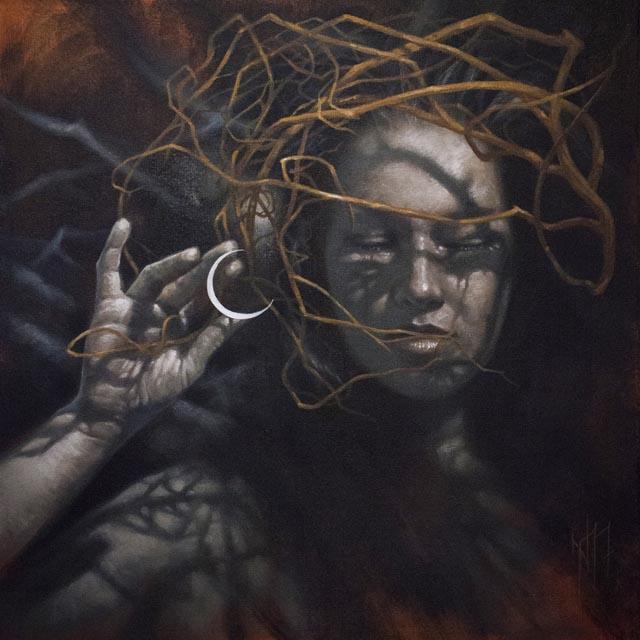
I would love to hear about your art education in Russia!
The art education in Russia is actually really good. I was going to art classes for four years as a teenager, but I took a different specialty at the university and continued art journey with occasional private classes after that. But I learned from people that had a lot of knowledge, even though there was very little understanding of what “modern art” means in Russia back then. But you have to understand that it’s a very different culture and different mentality. For example, when I first came to Norway, I started looking deep into art and art society. If you’re an artist here, you need to bring something new. You don’t have to be technically gifted. Maybe you aren’t even able to draw correctly, but you can have a form of expression that is really valuable. In post-Soviet society, that didn’t matter much. That system has produced a lot of gifted artists that can draw really well, but they often borrow other people’s ideas without really thinking about it, while being technically perfect. So, I had to adjust and be open-minded to absorb new expressions and finally stop chasing the “perfect.”
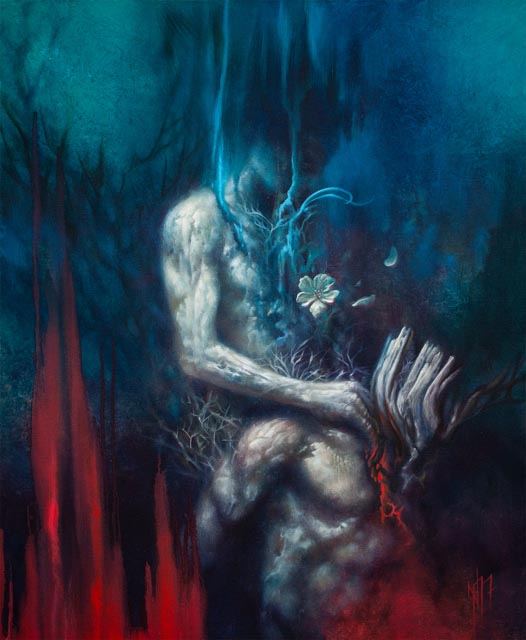
On the topic of Russia, you have restored icons. You described that as an honour. Do you want to speak about that at all? I know that your relationship with the church has changed over the years.
I’m still grateful that I got to do that — that they let me restore anything for them, knowing that I’m not religious and that I like black metal music. I got to talk to the priest that was in the church that had that icon. He’s the same age as me. We spoke like normal people do on a human level. The church has so much power, but this guy was kind of down-to-earth. I told him openly that my beliefs are very different from his, and he was cool with that. So, that’s why I did it. Now, my relationship with the church is much worse because they supported the war. I have absolutely nothing against people believing if it works for them though.
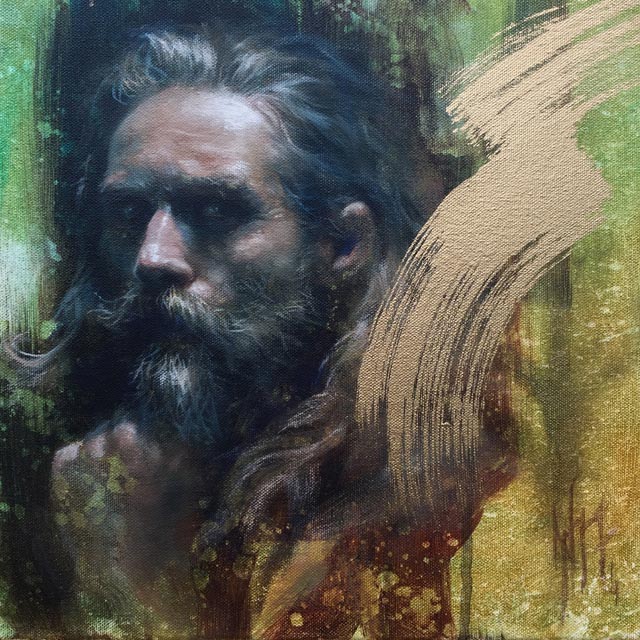
Some of my favorite musicians are actually Russian Orthodox, so do you have any favorite Russian bands?
Some years ago, I was a big fan of a band called Amatory.
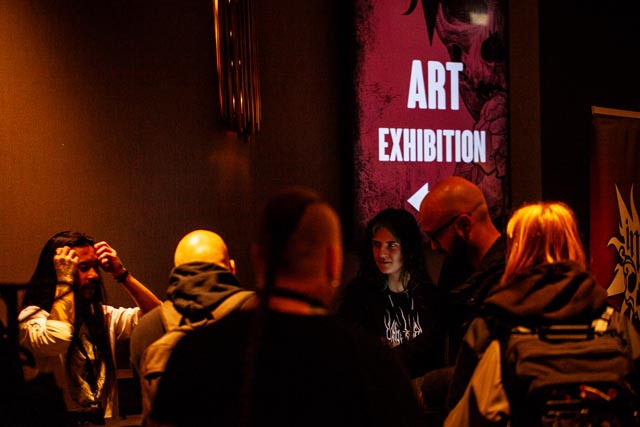
Would you be willing to discuss your legal battle and how you’ve changed things in Norway for the better through that?
Yes, I’m always open to talking about that. I did not enjoy that while it was in progress. I didn’t enjoy going through all those court processes and then being deported for two years until I won. Then, I was able to come back and return to doing what I do here. It made a beautiful story, and I’m really proud of it. At the end of the day, I was hoping that I would pave the way for more people. Everyone that has a similar job can follow my example. It opened a tiny gate. But I was still punished and treated like a criminal until I proved that I’m not. I wasn’t able to visit any country in the European Union because I was on the black blacklist for Europe. I tried going back to Russia. Then, I went to China, and then I went to New Zealand. So, yes, after working so hard on the case, there was the fantastic moment of the final triumph, and I was grateful. But the following burnout was terrible. I was talking to soldiers who have been to battle, and they always say that you push through the extreme situation easily because you’re full of adrenaline. The draining part comes after the battle. My hope for 2025 is that I will be done with all of this. It’s been years since I moved to Norway, and they are still pushing me. The state will do everything to avoid giving me permanent residency and stuff like that.
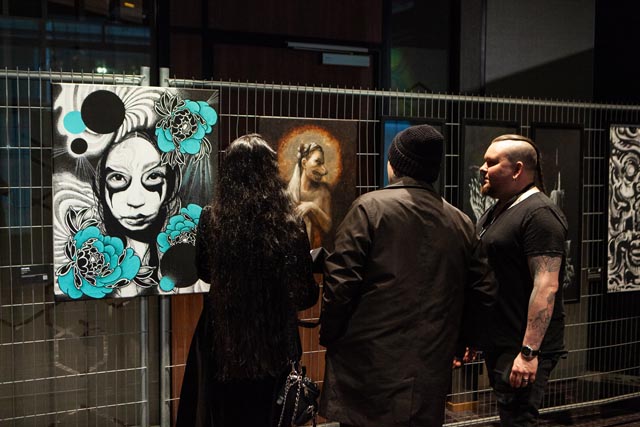
That’s horrible. I’m really sorry that you’ve had to deal with that. It’s so odd because within Norway and beyond, you’re so recognized. It’s a shame that the Norwegian government can’t see what other artists, fans, and festival organizers can and just celebrate you. Given that you have so many remarkable people who value what you do within the country, would you like to speak at all about some of your collaborators within Norway like Trine Grimm?
Without Trine, I would probably have a very different life in Norway. We became friends during one of my first trips to Norway. We were just sharing the booth at a tattoo convention. She was still an apprentice. We quickly realized that we both have the same dark sense of humor and eventually became best friends. So, I watched her grow as an artist, and she inspired me a lot. She was a part of “Circle Noir” art exhibition at Inferno in 2015 with me and Linda K. Røed. But because Trine is a snowboarder, she needs to snowboard on Easter. So, she exhibited at Inferno Art Exhibition last year, but she could only be there in person for the closing event after she accomplished her snowboarding mission. She made a beautiful portrait of Freezing Moo — the girl who ran the Mayhem fan club in Japan. Moo has passed away the year before that and it was a beautiful way to honor her memory. The guys from the band came and took a picture and sent it to her mother. It was just really sweet, you know. There was so much love. The festival involves people from Oslo that I’ve known for such a long time. Linda K. Røed is going to be exhibiting with us this year again. She has done great textile work, so she is going to make an installation this year. It will be done for this specific occasion, for Inferno Art Exhibition. Speaking of unique artistic expressions. You know Stan Dark Art, right? Stanislav Krawczyk.
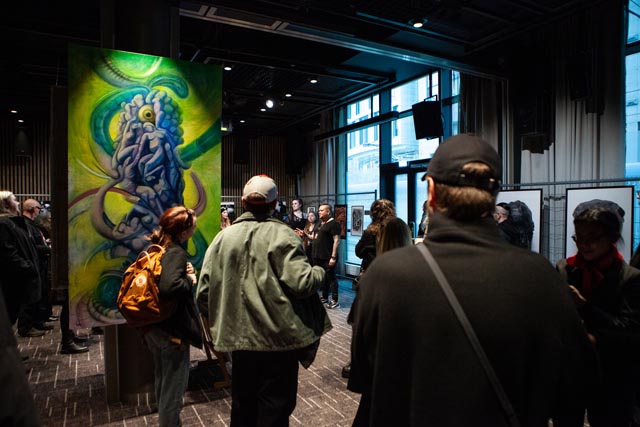
Yes, I wanted to mention Stan. I’m happy that he’ll be exhibited. He’s, of course, amazing as both an artist and a person. The lines that he writes to go with his art are also exceptionally wise.
I’m really happy that we connected on a personal level. It was nice to get to know him a bit and get to know his story. It’s important to have this human connection with artists. There’s so much pain in his drawings. I think people connect better and more personally when they know the story of the artist. The art then carries more weight. I don’t like explaining too much about the art, but it’s nice to see where it comes from. Another artist that kind of comes from the same place mentally as Stan is Roger Rasmussen from Carpathian Forest. He will be there to present his dark art. I’m going to his place to talk to him and see what he wants to show. But our exposition will feature a wide range of expressions, not only dark, but also inspiring, and even humorous. So, it will be a lot for people to absorb. One of my concerns was to balance the pieces and make sure that the exhibition will be entertaining. It will be. A lot of people will see their favorite art from album covers, and they’ll also see things that are visually different. We have an artist, Elisa Halvorsen Castillo, who is going to draw animation by hand. It will be presented on the screen alongside original drawings. There are a few photographers as well that will come too. The exhibition is getting bigger. For now, we have about 13 artists that have been confirmed. All of this needs to be organized and promoted further, but I have the best team for that.
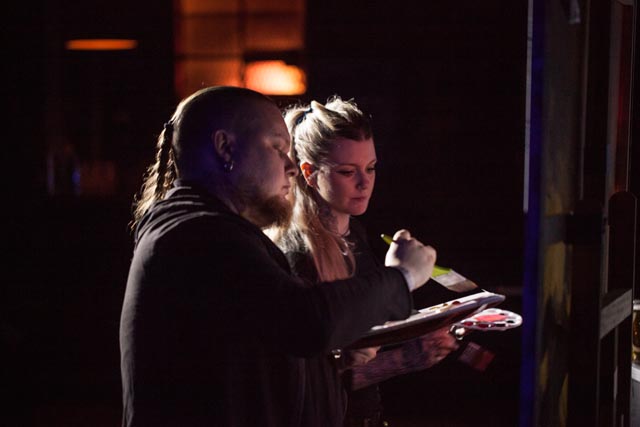
It will be incredible, and that’s excellent news about Nattefrost. Obviously, the exhibition and tattoo fair looked magnificent last year. You had people like Jannicke Wiese-Hansen as well as Costin Chioreanu and Kim Diaz Holm — the pair presented their music at the fest as well. At the opening, you had Harald Fossberg sign copies of Nyanser av Svart, so that was another nice thing. What have been the biggest challenges of organizing it all?
The biggest challenge was technically handling everything. We got the artwork, and we had a really good idea of the size of the room, where we could use everything. We even framed some of the art in advance. The idea was to make use of this fence instead of the walls because we’re not allowed to put a single nail into that hotel wall. When those fences came, we realized that the plan was not going to work. The fences were crooked, and we were missing a few standing pads for them. We had this puzzle to solve. So, that was the most challenging aspect — it was like a “little dance” that we had to do in this big room. Some of those pieces that we thought were going to look perfect looked too small, and some of those fences were too ugly for those smaller works. We ended up putting some pieces on the wall and solved the puzzle the day before the opening. But besides that, I was actually surprised that we didn’t have any big fails because when you plan something, you start something new — you know that there will be some misfires. But for this, I was like: “Wow, it actually went really well.”
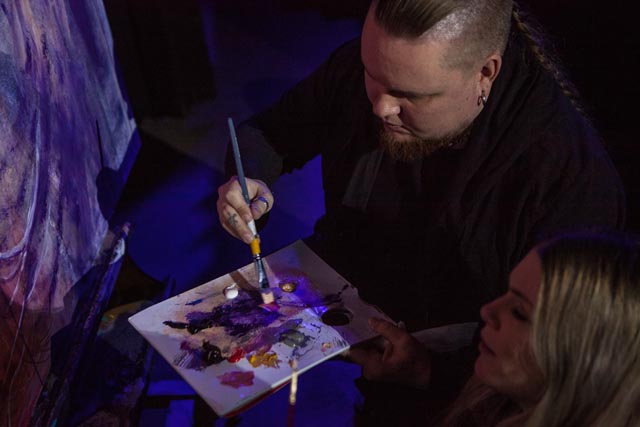
The story of how you did your first tattoo is cool — that was in 1999, and you created the tattoo machine from a guitar string, pen, and cassette player engine. Could you please tell us about the tattoo fair component of Inferno? I should also note that you’ve tattooed people like Malphas from Carpathia Forest.
I started at Inferno as a tattoo artist. At that time, most of my connections with black metal people have been tattoo-related. So coordinating the Inferno Tattoo Fair was quite an easy task. But at some point, I got so terribly burned out with tattooing. I was afraid I’d actually have to quit completely. So, I have stepped away to focus on art, and let trustworthy friend, Aleksandra M. Stasiak, be charge of the tattoo fair. So, I’m just supervising and coordinating at this point. Our Tattoo Fair has become a small convention by now. I’m really happy that it’s still growing on its own.
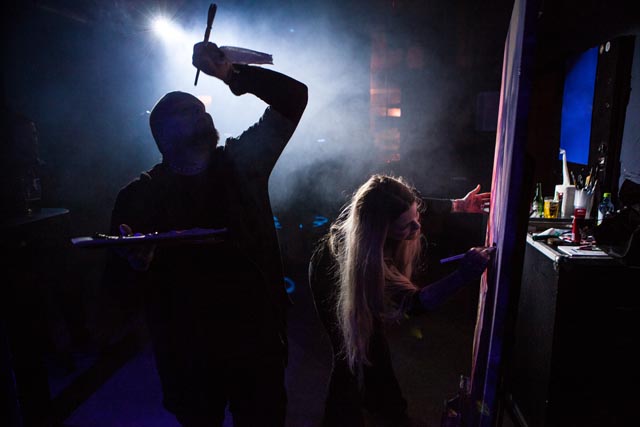
Fortunately, I did not quit tattooing completely. I feel like I’ve recharged enough to tattoo again. Some good clients eventually become friends, like Malphas. If he asked me to tattoo him more, of course, I would do it, how could I not? So, those guys are in good hands with me when they want a tattoo. I’ve tattooed my close friend, Geir Bratland, the keyboard player from Dimmu Borgir, for many years. He is the producer of my music project, and I will always be available for him as a tattoo artist. Most importantly, when we meet, whether it’s a music studio or tattoo parlor, we enjoy each other’s company and bring each other’s ideas to life.
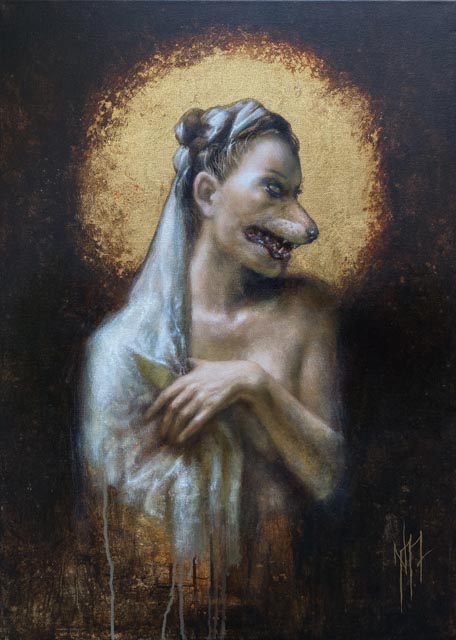
Speaking of Geir, your music is awesome. What should our readers know about it?
New music is coming. The break was not supposed to be that long. I was ready to start releasing some of my songs one by one with a few months in between. I couldn’t have chosen a “better year” than 2020! So, the first two releases came out. And then, you know, the apocalypse happened. Now, release number three is coming. There’s a lot of music in the works, but have to spend so much energy to release it properly. So, it will come out when I’m ready to present it.
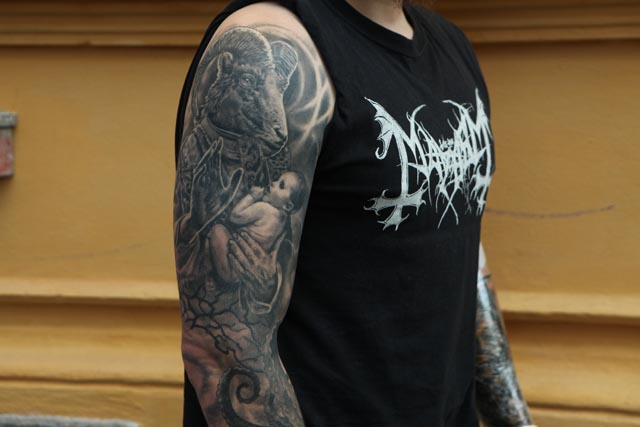
This brings me to my next question. You’ve been part of important festivals, besides Inferno, like Tons of Rock. There’s also Orgivm Satanicvm, Hellbotn, and CopenHell. Moreover, you’ve had a lot of exhibitions and painting demonstrations that haven’t been connected to fests. For example, Ole Teigen performed music as an accompaniment to your live painting at the Cin Cin Café, where you had a longer show. [Ole is a visual artist as well.] I like his solo work a lot as well as the music he’s done with bands. Of course, he was on the Doedsmaghird record with Vicotnik. So, I’m interested in hearing more about your collaboration with Ole.
Do you know what the most amazing part about that particular performance was? I had no idea what he was going to play. He also didn’t know exactly what I was going to paint. He just brought a bunch of his equipment, and it was actually a jam. We had agreed on the basic post-apocalyptic theme, but it was the first time in my life when I had no idea at all about the musical soundtrack until he started playing it. It was so beautiful. We didn’t have time to be stressed about the performance. If I were to overthink my part, I would probably fail remarkably. But we just went on and improvised in front of people. It was mesmerizing. I was walking around the canvas, putting one stroke at a time, as Ole was building up layers of musical sequence. At some point, he just walked out of his station and looked at the canvas, looked at the public. People were standing there as if they were hypnotized — you could look them in the eye, and they wouldn’t even see you looking at them because they were all into the music, and they were lost in the painting. That was amazing. So, yeah, I’ll definitely collaborate more with him. I’m not afraid to do that with other people because it takes a lot of courage to do that in public. Normally, you meet with musicians beforehand, and you exchange ideas. And this was like: “Hey, let’s just do it!” So, we did.
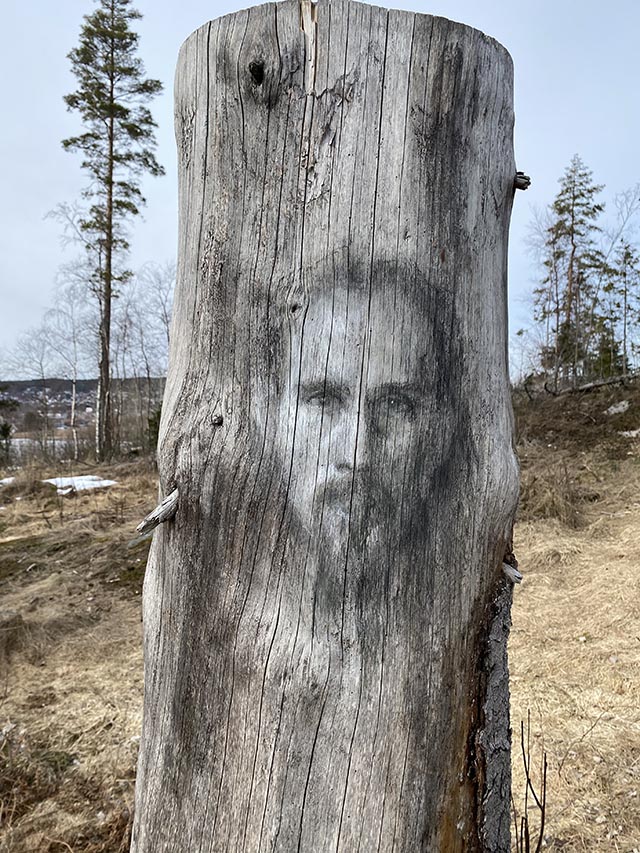
You had an exhibition in 2019 at Gaahl and Robin’s gallery, Galleri Fjalar [downstairs from Jannicke and Annlaug Maria Tolo’s tattoo studio], and then you returned last year and did some live painting. You described that as essentially your first solo show. You returned to the gallery last year to do some live painting. What can you tell us about that?
Reflecting upon that experience, I never make it easy for myself. I had a small solo exhibition in 2015, but that doesn’t really count. So, I was really looking forward to doing my first gallery show in 2019 at Galleri Fjalar. Luckily, when you get to know Gaahl personally, he’s the sweetest guy. I’m really happy that I got to know him before I got to exhibit at his gallery. His presence gave me a lot of confidence. I didn’t expect that so many people were going to show up. I did a live painting at the opening at the closing of that exhibition. That was inspiring and enjoyable. But the next event only came to life in 2024, in the form of a three-day-long painting experiment. The only exhibiting pieces were five canvases that I was working on continuously. What a fun challenge!
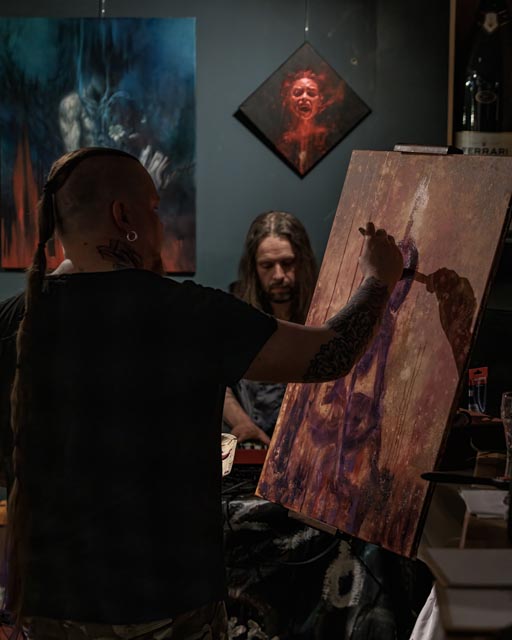
Another thing that comes to mind is that you’ve rendered Gaahl’s likeness on a tree. That looked fabulous. You’ve had all sorts of cool commissions like a label for Cervisiam Brewery, and you’ve painted helmets. You’ve even done street art. So, I was wondering if you could speak about experimenting with various forms of expression.
That face started to look like Gaahl when I was drawing it. I didn’t mean to draw his portrait, I just wanted to try natural charcoal on an actual tree. But when I saw that it looked like him, I made the face look more like Kristian. The place where that tree is not too far from the house, so see it when I go for hikes. It’s really interesting to see how the portrait ages because the tree is dead. The black charcoal that I used is still there after a few years. The tree is actually falling apart, but it looks like a living thing. So, every time I pass by that drawing on the tree, I see how much it fades, how different it looks when it’s wet or exposed to different temperatures. It’s really fascinating, and it reminds me that aging is a beautiful thing.
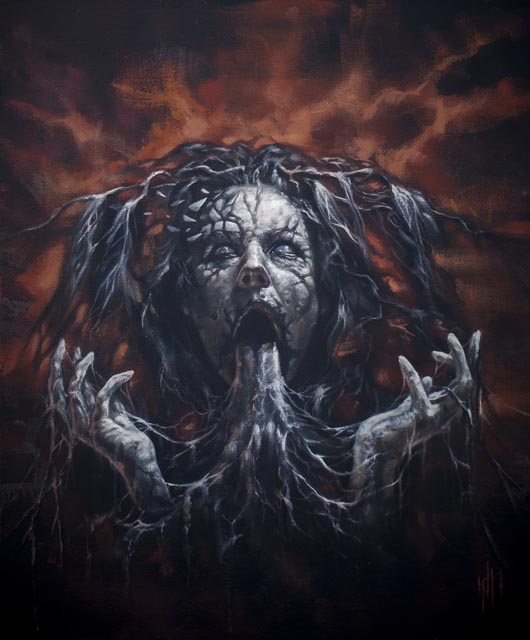
We have to touch upon your appearance on NRK. How was that experience for you?
Oh, yeah, that was funny, because I knew that I would take up too much attention if I got to stay the full show throughout the season. So, I knew that I would probably just be in one episode. The episode that we were filming was supposed to be episode number three, but they made it a pilot. I take it as a compliment because I think I made it entertaining. I don’t really like to watch TV much. I’m always bored watching TV programs. But I watched this one and was like: “Yeah, we actually made it worth watching.” I have a little bit of experience with being on TV programs, while other artists often get stressed and freeze in front of the camera. They forget that you still have to entertain people. I always remember that. So, that was fun.
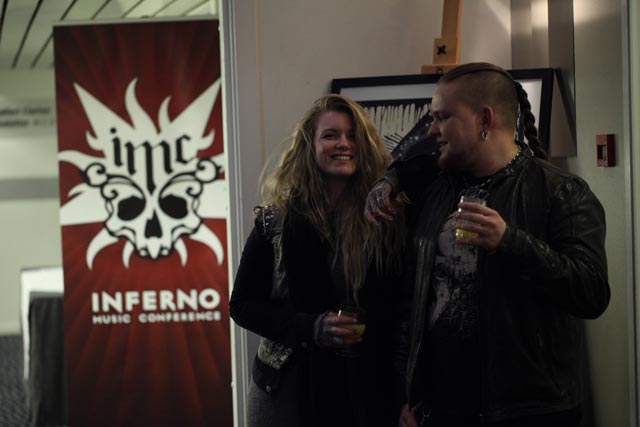
You were featured in New Zealand Artist Magazine, for instance, and you also appeared in Aristokatt, which is a Norwegian cat magazine.
That was one of the most amazing and funny accomplishments. It made my parents very happy. The cat magazine was just surprised to receive a submission like mine. They usually say: “Send us pictures of your pets” So, one of the ladies that worked with that magazine had ordered a commissioned painting from me some years ago. Then, she said: “Why don’t you try sending them some pictures of your work? But please be nice and send them nice pictures. Don’t send the scary stuff.” So, I did. Right away, they replied: “Hello, we’re making an article about you.” The readers were really happy to see my animal-related artwork there. They were like: “Oh, that’s different.” It left a mark. Yeah, the article in New Zealand Artist Magazine also happened because I was not shy sending them a bunch of my work and present myself directly.
I mentioned festivals, besides Inferno, earlier, but I should ask you more about the topic. Is there anything you’d like to share about them?
Trine and I started doing those festivals when we were pretty much nobodies, and the festivals were small. I don’t know how the hell we were even allowed to be there. We were watching the scene transform. From tattooing musicians backstage to standing on actual stages with live painting performance — it’s amazing. It was a long journey. And we’re just going to keep doing it. The biggest difference over the past 10 years, as these festivals have grown is that, in the beginning, people were surprised to see the art stands at the music festivals. Now, when they cannot find it, they actually ask: “Where’s the art?” So that’s a huge improvement in people’s mentality. They expect festivals to have the full package — visual and musical in one.
It’s my understanding that you’ve worked with clothing.
I just did a few pieces of art for T-shirts.
You also do illustration.
Depending on what your definition of illustration is. Illustration, to me, includes album cover art and all kinds of visualizations of written or spoken word, including music. So, I keep doing illustrations but on a different level. I would actually like to illustrate a book, if there was a demand for it.
You write, I believe?
Yes, but I write so much less now. I think I write well, and I like writing, but I write terribly slowly. For me, writing even a short article for the magazine will take a few days. You know, I need to measure every word. So, yes, when I occasionally write articles or short essays for a publication, I do it with joy. There are also a lot of stories that I’m starting to write down in a form that’s autobiographical, though the book (if it’s ever finished) will not be an autobiography. They are just stories from my life. It’s going to take me another 999 years to finish that. I wish I could write more. I’ll catch up when I retire!
What language do you tend to write in?
By now, mostly English. I just switched at some point. I used to write for the Russian editions of Classic Rock and Metal Hammer when I lived there. That was quite a long time ago. I enjoyed it. I could choose bands that I wanted to see and write articles about concerts. But it’s been many years since I did it. I think some of my last articles in that vein came out in 2010/11 or something like that.
Did you mostly cover Russian bounds or international bands?
International bands that come to Russia. They would play a show, and we would just go, usually me and a photographer. Most of the time, we would get a chance to do a short interview or at least a press conference. That was nice, and that was fun. I got to interview Korn in St. Petersburg and talk to Metallica in Moscow at the press meeting. Those were good times.
(We thank Nick Morte for his fantastic interview. You can visit his website here.)

